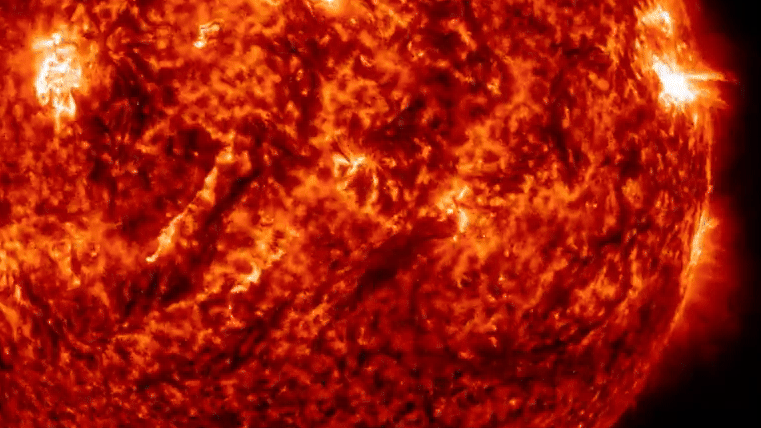Sunspot Fires Off 6th Powerful Flare This Week

They call sunspots "active regions" for a reason.
Active Region 2673 (AR 2673) blasted out yet another solar flare early this morning (Sept. 8), its sixth intense burst of high-energy radiation since Monday (Sept. 4).
The latest flare, which peaked at 3:49 a.m. EDT (0749 GMT), registered as an M8.1 on scientists' three-tiered classification scale. ("C" flares are the weakest of the three, "M" flares are 10 times stronger than C's, and "X" events are 10 times more intense than M's. There is gradation within each category, too: An M8 flare is eight times stronger than an M1, for example.) [The Sun's Wrath: Worst Solar Storms in History]
Two of the six recent flares from AR 2673 were X-class — including Wednesday's (Sept. 6) monster X9.3, which was the most powerful solar flare since 2005.
Strong solar flares are often accompanied by coronal mass ejections (CMEs), eruptions that send clouds of superheated solar plasma racing into space at several million miles per hour. CMEs that slam into Earth can trigger geomagnetic storms, which can temporarily disrupt power grids and interfere with satellite communications, among other negative effects.
But geomagnetic storms also tend to ramp up the northern and southern lights, extending the reach of these gorgeous, ghostly displays to unusually low latitudes.
And some lucky skywatchers have gotten an aurora eyeful this week, thanks to CMEs associated with an M-class flare on Monday and Wednesday's X9.3. Though this latter CME hit Earth with just a glancing blow, the storm it generated brought the northern lights within sight of viewers as far south as Arkansas overnight Thursday (Sept. 7).
Get the Space.com Newsletter
Breaking space news, the latest updates on rocket launches, skywatching events and more!
Unfortunately for skywatchers, that storm seems to be tapering off, and supercharged auroras probably aren't in the cards tonight or beyond, experts said.
"I can't rule it out, but I don't think the chances are good," Bob Rutledge, of the National Oceanic and Atmospheric Administration's Space Weather Prediction Center (SWPC) in Boulder, Colorado, told Space.com.
AR 2673 also continues to rotate away from Earth toward the sun's limb, so any other CMEs it blasts out in the near future likely won't affect our planet, added Rutledge, who leads SWPC's forecast center.
Editor's note: If you snap a photo of the northern lights and you'd like to share it for a possible story or image gallery, please send images and comments to Space.com at spacephotos@space.com.
Follow Mike Wall on Twitter @michaeldwall and Google+. Follow us @Spacedotcom, Facebook or Google+. Originally published on Space.com.
Join our Space Forums to keep talking space on the latest missions, night sky and more! And if you have a news tip, correction or comment, let us know at: community@space.com.

Michael Wall is a Senior Space Writer with Space.com and joined the team in 2010. He primarily covers exoplanets, spaceflight and military space, but has been known to dabble in the space art beat. His book about the search for alien life, "Out There," was published on Nov. 13, 2018. Before becoming a science writer, Michael worked as a herpetologist and wildlife biologist. He has a Ph.D. in evolutionary biology from the University of Sydney, Australia, a bachelor's degree from the University of Arizona, and a graduate certificate in science writing from the University of California, Santa Cruz. To find out what his latest project is, you can follow Michael on Twitter.









